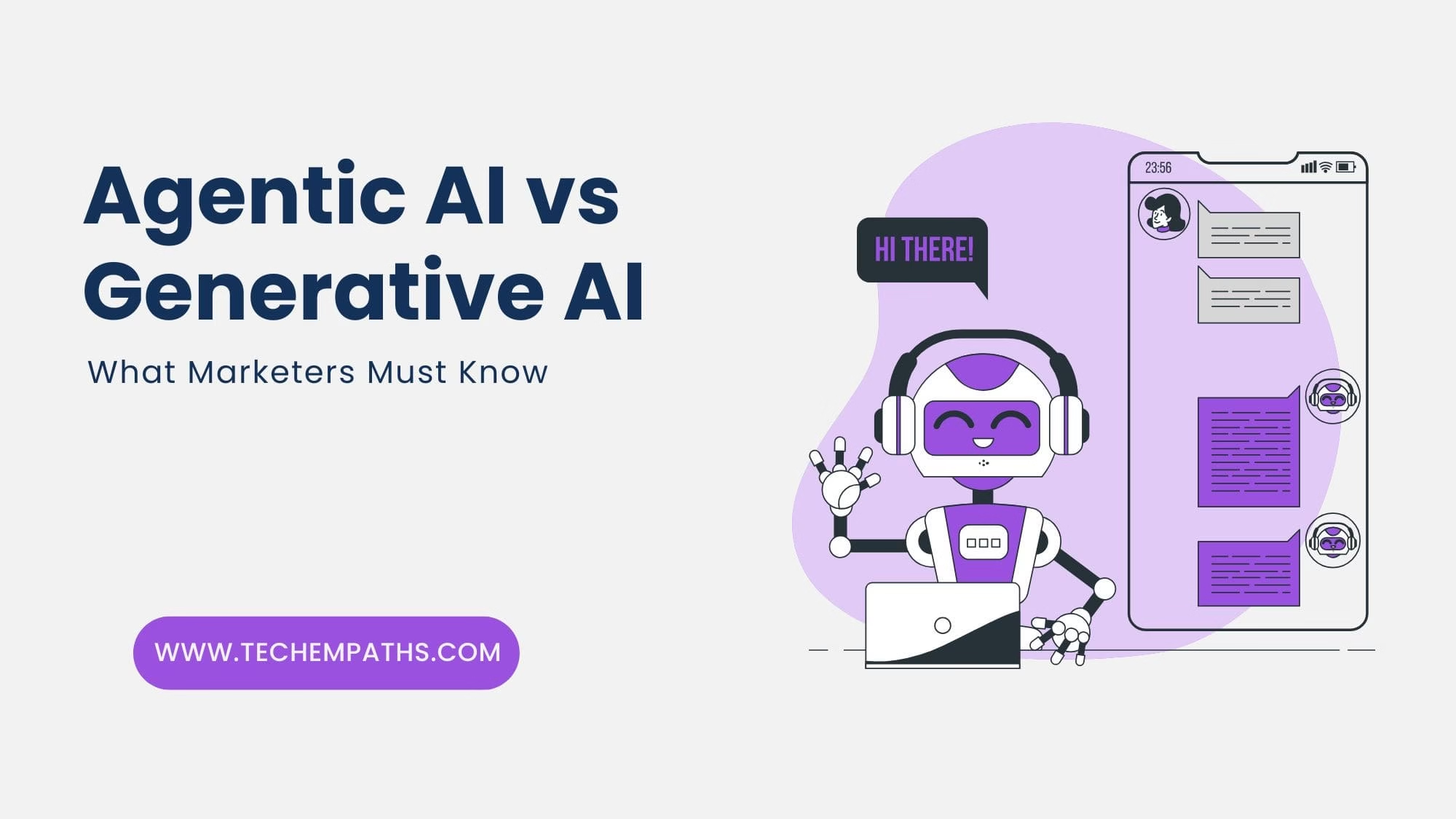Introduction
Artificial intelligence is revolutionizing marketing—but not all AI is built the same. As we step deeper into 2025, two distinct types of AI are gaining traction in the marketing world: Generative AI and Agentic AI.
Understanding how they differ, their strengths, and how they integrate into marketing workflows is essential for marketers aiming to stay competitive, relevant, and effective.
What is Generative AI?
Generative AI refers to AI models that create content—text, images, audio, video—based on prompts. This includes tools like:
- ChatGPT (text generation)
- DALL·E (image generation)
- Sora (video generation)
- Copy.ai, Jasper, and Writesonic (AI writing tools)
Core Features:
- Content creation at scale
- Natural language generation
- Personalization capabilities
- Limited autonomy; executes one task at a time
How It Works:
Generative AI is usually prompt-based. A marketer provides input (e.g., “Write an email for a Black Friday sale”), and the AI generates relevant content instantly.
What is Agentic AI?
Agentic AI represents the next evolutionary leap. These systems aren’t just reactive; they act with autonomy based on goals and context. They can plan, execute, and iterate across multiple steps without needing continuous human input.
Examples of Agentic AI:
- AutoGPT
- OpenAI GPT-4o with memory + custom instructions
- Cognition Labs’ Devin (AI software engineer)
- Meta’s CICERO (strategic AI negotiation)
Core Features:
- Multi-step autonomous execution
- Strategic goal setting and decision-making
- Context retention over long workflows
- Capable of learning and self-improvement
Key Differences Between Agentic and Generative AI
| Feature | Generative AI | Agentic AI |
|---|---|---|
| Primary Function | Creates content from prompts | Executes multi-step tasks autonomously |
| Control | Human-led | AI-driven with goal-based autonomy |
| Scope | Narrow (single task) | Broad (strategic and multi-domain) |
| Example Tools | ChatGPT, DALL·E, Jasper | AutoGPT, Devin, ReAct agents |
| Workflow Integration | Reactive asset generation | Proactive campaign management |
How Generative AI Impacts Marketing
Generative AI has already transformed how marketers create and scale content. Some of its key applications include:
1. Content Creation
- Blogs, social media posts, product descriptions, and more
- Tools like Copy.ai and Jasper streamline editorial calendars
2. Ad Copy & Personalization
- Tailor messages to different audiences with ease
3. Visual and Video Content
- AI-generated videos and product mockups using tools like Synthesia or Runway
4. Email Campaigns
- Personalized sequences based on user behavior
Generative AI saves time, enhances creativity, and reduces the cost of production.
How Agentic AI is Transforming Marketing Workflows
Unlike generative AI, Agentic AI doesn’t just create content—it manages the entire marketing process. It acts more like a strategic partner than a tool.
1. Campaign Orchestration
Set a goal like “increase Q3 leads by 20%” and an agentic system can:
- Analyze performance data
- Create a multichannel campaign
- Monitor and adjust strategies autonomously
2. Customer Journey Optimization
Agentic AI can map out complex customer journeys and make real-time adjustments based on performance signals.
3. Marketing Automation 2.0
Goes beyond traditional workflow automation. It proactively recommends and executes marketing actions (e.g., retargeting ads, A/B tests, landing page optimizations).
4. CRM and Sales Integration
Integrates with tools like HubSpot or Salesforce to automatically follow up with leads, personalize touchpoints, and adjust pipelines.
Use Cases: Real-World Examples
🔹 Generative AI Use Case – Email Marketing
A fashion retailer uses Jasper to generate 10 personalized email variations for different customer segments, increasing click-through rates by 38%.
🔹 Agentic AI Use Case – End-to-End Campaign Management
A SaaS company uses AutoGPT to create a quarterly content calendar, publish posts via Buffer, monitor engagement, and auto-optimize underperforming content—saving 40 hours/month.
Challenges and Considerations
For Generative AI:
- Still needs human supervision
- Quality may vary
- May generate off-brand or inaccurate content
For Agentic AI:
- Requires clearer goal-setting and prompt engineering
- Can make decisions that feel “black box”
- Integration into legacy workflows is complex
Both require ethical considerations around bias, data privacy, and brand safety.
Which One Should Marketers Use in 2025?
The answer isn’t either/or—it’s both.
✅ Use Generative AI for:
- Rapid content creation
- Testing ideas
- Supporting creative brainstorming
✅ Use Agentic AI for:
- Managing complex campaigns
- Multichannel optimization
- Strategy execution with minimal input
The synergy of both will shape the future of marketing co-pilots—AI agents and tools that not only assist but lead certain functions in your team.
Conclusion
2025 is witnessing the dawn of Agentic AI, but Generative AI still holds immense value in content-heavy marketing environments.
For marketers:
- Generative AI is your creative arm.
- Agentic AI is your strategic brain.
Together, they can automate, accelerate, and amplify your marketing like never before. To stay competitive, marketers must explore how these tools complement each other and embed them into the core of their digital strategy.
If you’d like this article exported to a WordPress-ready HTML, markdown format, or Google Doc, let me know!




Leave a Reply